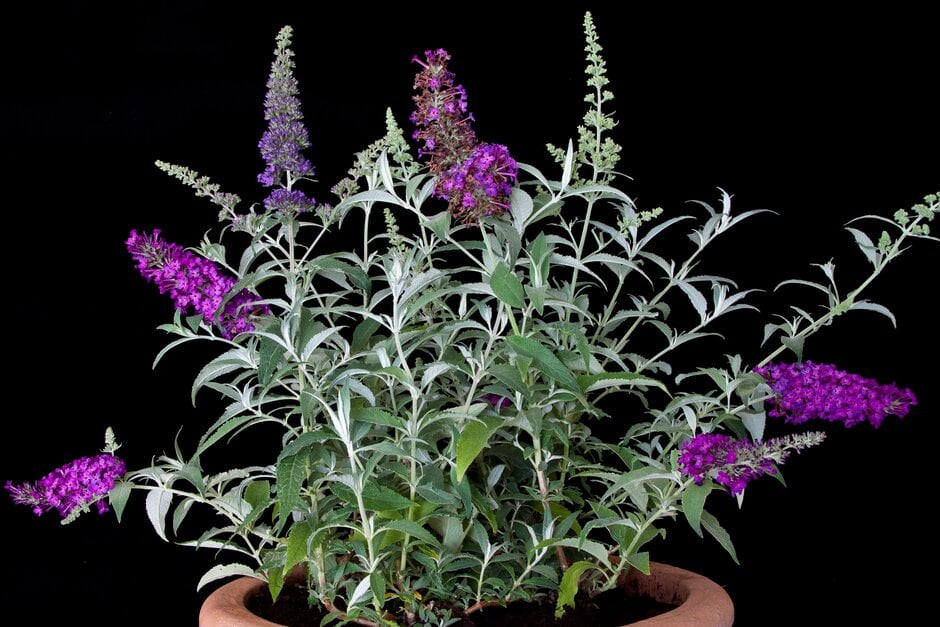Size
Ultimate height
1–1.5 metresTime to ultimate height
5–10 yearsUltimate spread
1–1.5 metresGrowing conditions
Moisture
Moist but well–drainedpH
Acid, Alkaline, NeutralColour & scent
| Stem | Flower | Foliage | Fruit | |
| Spring | Green | |||
|---|---|---|---|---|
| Summer | White Purple Red Blue | Green | ||
| Autumn | White Purple Red Blue | Green | ||
| Winter |
Position
- Full sun
Aspect
South–facing or West–facing
Exposure
Exposed or Sheltered Hardiness
H6Botanical details
- Family
- Scrophulariaceae
- Native to GB / Ireland
- No
- Foliage
- Deciduous
- Habit
- Bushy
- Genus
Buddleja can be evergreen or deciduous shrubs, occasionally trees or scrambling climbers with simple leaves and panicles of small, tubular fragrant flowers
- Name status
Accepted
How to grow
Cultivation
Grow in fertile well-drained soil in full sun. Deadhead spent flowers to prolong the season. See buddleja cultivation for more detailed advice
Propagation
Propagate by semi-ripe cuttings in summer
Suggested planting locations and garden types
- Cottage and informal garden
- City and courtyard gardens
- Coastal
- Wildlife gardens
- Patio and container plants
- Flower borders and beds
Pruning
Prune hard annually in early spring back to a low framework, pruning group 6; deadhead to prolong flowering
Pests
May be susceptible to aphids, capsid bugs, caterpillars, earwigs, figwort weevils, glasshouse red spider mite, leaf and bud eelworm, and mullein moth
Diseases
May be susceptible to honey fungus, fungal leaf spot, and virus diseases
Get involved
The Royal Horticultural Society is the UK’s leading gardening charity. We aim to enrich everyone’s life through plants, and make the UK a greener and more beautiful place.
